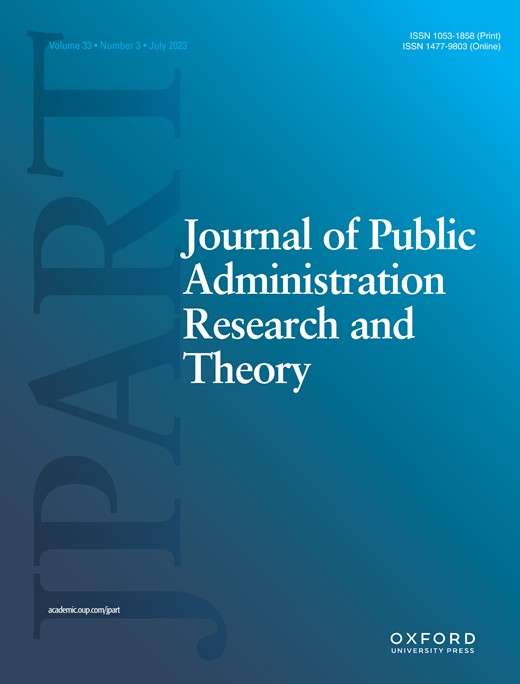-
Views
-
Cite
Cite
George A Krause, Jungyeon Park, Does Coordinated Administrative Leadership Improve US Federal Agency Management of Discrimination Problems?, Journal of Public Administration Research and Theory, Volume 33, Issue 3, July 2023, Pages 529–545, https://doi.org/10.1093/jopart/muac032
Close - Share Icon Share
Abstract
Although the Equal Employment and Opportunity Commission (EEOC) requires that agency EEO directors serve under the direct supervision of agency heads, considerable variation exists on whether agencies adequately implement this requirement into practice by adopting a formal mechanism termed a coordinated reporting organizational arrangement (CROA). A dual exposure−informal resolution strategy is proposed to understand how CROAs improve US federal agencies’ organizational efforts at managing workplace discrimination. This logic is statistically evaluated by estimating endogenous treatment effect regression models that analyze discrimination caseload data from EEOC Annual Reports between 2010 and 2014 spanning 131 US federal agencies. Consistent with this dual exposure−informal resolution strategy, the statistical evidence reveals that CROAs not only encourage agency employees to report incidents of workplace discrimination, but also augment agency efforts at successful internal resolutions of these reported incidents, thus reducing formal complaint filings. Yet, the beneficial effects associated with CROAs are most acutely realized for those agencies displaying either low or high levels of organizational fairness.





